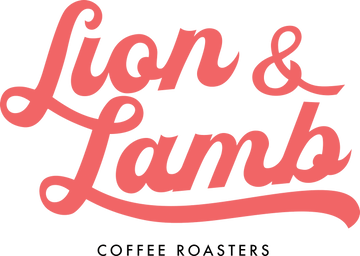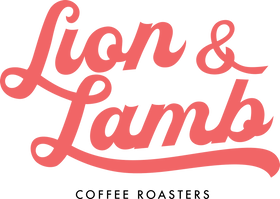Ultimate Guide: How to Make Cold Brew Coffee

Cold brew coffee has been in the spotlight for quite some time now, but chances are your favorite coffee shop is holding their cold brew coffee recipe hostage. Their reason behind this makes sense...mainly because it's not all that difficult to make, and would keep you from paying $5 for a cup when you can make a gallon at home for the same price. Not only will you be saving a few bucks every month, cold brew coffee is super customizable so you can make it as strong or weak as you like.
Cold Brew Coffee vs. Iced Coffee
So what makes cold brew so special, and how is it different than normal iced coffee? Well, just as its name sounds, cold brew is brewed either cold or at room temperature. The colder temperature water is what gives cold brew its “it” factor. A smooth flavor profile without a trace of bitterness or acidity. This is because the oils and acids that would usually be released in regular coffee from hot water, are less easily released in cold water. The lack of acid in cold brew has also made it a nice alternative for coffee drinkers who have found stomach issues with regular coffee, more on that here. Since we are not using any hot water, the brew time for cold brew will have to be much longer however. This can range anywhere from 12-48 hours depending on your grind size, amount of coffee used, and storage. Typically, darker roasted coffee works better for cold brew because of its more neutral chocolate & nut flavor notes.
Variables to Consider for Making Cold Brew Coffee
Before we get down into the recipe, there are a few things to be said. While this recipe is really awesome in our opinion, there are tons of other ways to make cold brew and coffee in general. Just like some people love cream and sugar, while others don't. Different strokes for different folks ya know? With that said, it can be really satisfying to try out different variations of recipes to see if you prefer one more than the other.
Grind Size
Grind size is one variable that most people agree should be very coarse for cold brew, and we agree. However you can make just as tasty brews with coffee that is ground a little finer than you would expect, and to compensate you would need to reduce the amount of time you brew for, and probably the amount of coffee you use. We are not going to get into those details today, but just know those options are on the table, so play around!
Time
Time is also something that will play a huge role in your cold brews taste. As the saying goes, “the longer the stronger” reigns true. We think a 24 hour brew time is a good start. If it is too strong you can always add milk or water and if it's too weak you can just brew it a little longer!
Ratio of Water to Coffee
A lot of people like to make a concentrate of cold brew, which just results in a beverage that is very strong and, unless you are wanting to stay up for a week, needs to be diluted with milk or water. You can opt for this method which would generally be about 5:1 ratio of water to coffee, but we find a brew that isn't concentrated to just be overall more pleasurable than something that needs to be diluted. For that reason we are using a ratio of 8:1 or 8 parts water to 1 part coffee. If you don't have a scale (highly recommend you get one for many applications other than coffee), you can simply measure the coffee and water in a measuring cup. For example, for a gallon of cold brew you would use: 2 cups of coffee and 16 cups of water.
What to Brew Your Cold Brew Coffee In
You have a few options on how to brew your cold brew or what to brew it in.
-
The first option is the bag option, this is how most coffee shops make their cold brew in bulk, just with larger bags. You can do the disposable or reusable route. We love Alto Cold Brew and their filters. They are very well made and capture all off the fine coffee particles that can seep into cold brew and make it taste “muddy”.
-
The second option is using a reusable bag (the environment thanks you). We have tried a few and think these are the best, hands down.
- The other option is to get a cold brew making “container”. The only problem is that they limit how much you can make at one time. These include the filter, usually metal, and the container in which the cold brew will be made and served from, handy! We like this one.
Once you have chosen your materials, all that's left is to add your coffee, water, and brew! It is important to take care in making sure your coffee is fully saturated with water while submerged. It is very easy for coffee to create dry pockets, so make sure you stir! We like to stir once at the beginning when you pour your water in, and then 5 minutes later to ensure total saturation.
Additional Questions about How to Make Cold Brew
Which Coffee Beans are Best for Cold Brew?
There isn't really a “best” coffee for cold brew, it just comes down to what you are looking for. If we really had to decide, it would be a medium to dark roast from any of the Americas. Lighter roasts tend to be more fruit forward, which can taste delicious in a cold brew, but really underperforms with traditional cold brew techniques because of the lack of acidity. To add to that, if you are going to add milk or sugar to the cold brew, a medium or dark roast will be more pleasant.
What Water Should I Use for Making Cold Brew Coffee?
Water quality is at the top of the list in terms of what is important when brewing coffee. It should be just as important as the quality of beans you use. With that said, most people don't think about their water quality, and don't give it the attention it deserves. Oftentimes your average filtered tap water is much too hard for consumption, let alone coffee brewing. Yes, water has minerals in it that either makes it hard or soft, and when tasting the two side by side, it is very easy to tell which one is preferential. Most city water sits around 300-500ppm, when ideally you will be around 150ppm for coffee brewing. If you want to go the lazy route, you can use bottled spring water which will suffice. The alternative would be hooking up a proper water filtration system in your home, or using Third Wave Water.
Is Cold Brew Coffee Less Acidic?
Yes, this cold brew recipe and cold brew in general is around 66% less acidic than traditional hot coffee. This is due to the fact that the cold water is a weaker solvent than hot water (think putting sugar into hot tea vs iced tea). See how having less acidic coffee can help elevate coffee stomach pain here.
Can Cold Brew Be Heated into Hot Coffee?
Yes! We actively promote this “trick” for people with limited time but need coffee fast in the morning. Our recommendation is to brew a stronger cold brew by using more coffee. Then by simply adding hot water to the concentrate you can still enjoy a hot brew in the morning in less time! Additionally it is great for people with stomach acid issue that miss the experience of hot coffee, this is a nice work around making cold brewed coffee and adding hot water to it.
What is the Proper Storage for Cold Brew Coffee
It is best to store your cold brew in the fridge, covered for up to a week!
Fridge or not?
Brewing your cold brew recipe in the refrigerator can significantly change the flavor profile and characteristics or your cold brew. This is something that is fun to experiment with. You can keep all other variables the same and brew one in the fridge, and one outside the fridge and get very different results. Natural or unwashed, coffees in our humble opinion do well in the fridge as it can mellow out the intensity of flavor while keep complexity. If you want to try a cold brew with Natural coffee, here is an amazing Natural Ethiopian Coffee we roast ourselves!
Your cold brew recipe can go up to 48 hours (or more) in the fridge and still taste great. As with anything, you will have to test this for yourself and experiment with different variables. If you are going for a "brighter" more powerful sip, then outside the fridge will give you that. For a truly mellow sipping cold brew, definitely experiment with your fridge.
Other Brewing Methods for Cold Brew
"Hot Bloom" Cold Brew Method
Okay so this is venturing a bit outside of the true cold brew definition. However, it can give you some really great cold brew just the same. With this method you will be "blooming" your coffee with boiling water, similar to how you make a pour over. This is going to give you a bit more acidity/sharpness and open up a wider range of flavors. Typically you will get more fruit forward flavors, so if you enjoy those in a cold brew, check this coffee out! You should aim to use about 1/3 of your total water as boiling water. Stir and let rest for five minutes, then add the rest of your water, stir and let rest. Usually your brew time is going to be less than usual because of the hot bloom, 16 hours is a good place to start.
"Flash Brew" Cold Brew Method
Again, venturing away from cold brew, and this is technically iced coffee. This method may be for you if you aren't necessarily enthralled with a heavier bodied coffee you definitely get from cold brew. Flash brew uses hot water like regular coffee brewing methods, but is flash cooled, usually over ice. Similarly to the hot bloom tip, the use of hot water will bring out more acid, floral, and fruity notes. Usually lighter roasted coffees are better for this method, as darker roasts tend to get a more charred taste going from hot to cold. We like to use a 1:10 ratio of coffee to water brewed directly over ice. 300g boiling water, and 100g of ice in your brew container. Brew with your normal pour over technique and enjoy!


Leave a comment